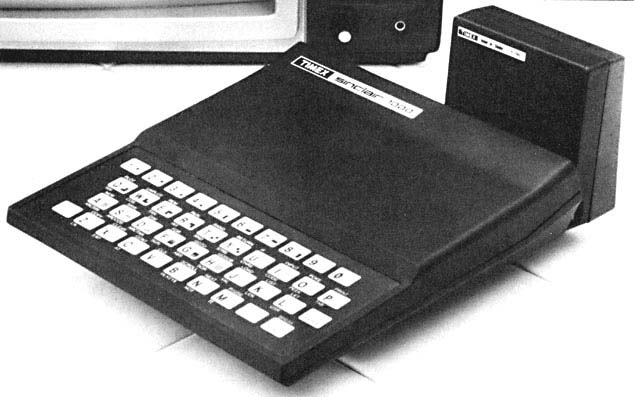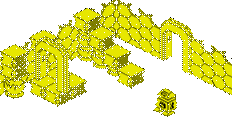The Timex/Sinclair 1000
Billy Garrett
POB 18806
Greenboro, NC 27419-8806
Sure, I could easily explain such a purchase if my old computer was too slow or unable to do the things that the new one could, but that's not the case at all. That excuse is reserved for some 16- or 32-bit processor that isn't on the market yet. The fact is I suddenly found myself buying a Timex/Sinclair 1000. And what's worse, I already own a Sinclair ZX80! Clearly, this was going to take some creative explaining.
At first, I thought I could convince people that I bought it for experimentation, but that argument is a little shaky. I concluded that the only way to justify the purchase was to write a review of it.
As most of you know, the Timex/Sinclair 1000 is essentially the same as the Sinclair ZX81. What you might not know is that all along Timex has been building the ZX81 for Sinclair. Under either name, the Sinclair people seem to have outdone themselves in designing it. It is similar to the older ZX80, and ZXSO users can upgrade their computers to the full capabilities of a T/S 1000.
In this review, I will first give you a general idea of what the unit is like. I'll then take you on a trip through the inner workings of the hardware. Finally, I'll try to compare the BASIC interpreter against some known standards. When I'm finished, I hope you'll see why the T/S 1000 fascinated me, and why I bought one.
General Characteristics
The T/S 1000 comes completely assembled and tested for $99.95. At one time, if you wanted to save $20 and spend a few hours assembling a computer, you could have ordered the Sinclair ZX81 kit. But Sinclair has now stopped selling the ZX81 and has allowed Timex an exclusive market in the United States. You can expect the new Sinclair Spectrum color computer to be handled in the same way. Sinclair will sell them exclusively for a while, and Timex will then take over the marketing.
The basic T/S 1000 package consists of the unit shown in photo 1 plus patch cords for a recorder, a connection wire and switch box for your TV, a manual, and a transformer. An optional 16K-byte RAM (random-access read/write memory) pack is also shown in photo 1.
The computer is easy to set up and use. Clear instructions show you what to do, and practically anyone should be able to set the computer up quickly. The accompanying manual is well written. Although it is not too simplistic, people with no knowledge of computers will be able to read it.
The T/S 1000 must of course be hooked up to a television set to be useful. The display, made up of black characters on a white background, has 24 lines with 32 characters per line. The two bottom lines, however, are used by the BASIC interpreter. Therefore, you really have only 22 lines. Within the character set are several graphics characters that are useful for games and charts, The cursor on the screen acts as a prompt and appears ar a reverse video K, L, F, G, or S, which shows how the computer is going to interpret the next key entered. It will be interpreted as either a keyword, a letter (or number or symbol), a function, a graphics symbol, or a letter to correct a syntax error (if you make one, that is!).
 Photo 1: The Timex/Sinclair 1000 computer with the optional 16K-byte RAM pack, which attaches to a connector on the right rear of the computer. The basic unit powers the RAM pack. (Photo courtesy of Timex Computer Corporation.) |
The cassette interface is simple and reliable. You can name programs when you save them, and have the computer search through the tape and find a specific one, or just load the next one found.
The most restricting thing about the computer is the keyboard. I am used to typing, and it is impossible to type on a keyboard as small as this one. Also, each key can signify up to four things (a letter, a BASIC keyword, a function, or a graphics symbol). Although the keys are well marked, it is hard to remember which key does what. Some of the keywords, like Delet'e and Edit, are in awkward places. The keys themselves provide almost no tactile feedback and are closely spaced; you constantly have to look at the screen to see if you have pressed the right key.
At A GlanceNameTimex/Sinclair 1000 Manufacturer Timex Computer Corporation POB 2655 Waterbury, CT 06725 (203) 574-3331 Price $99.95 Dimensions 6 5/8- inches wide by 7 inches long by 1 1/2-inches high (16.8 by 17.7 by 3.9 cm) Processor |









